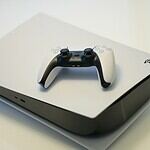Experiencing a “No DP Signal From Your Device” error on your Dell monitor can be frustrating. This issue usually happens because of problems with cables, ports, drivers, or hardware settings. Most solutions are simple and can help you get your monitor working again quickly. The “No DP Signal” message on your Dell monitor can be frustrating, but with the troubleshooting steps outlined above, you can likely resolve the issue. This error message usually happens because of simple problems like loose connections, incorrect settings, or outdated drivers. By carefully checking each potential cause, you can get your monitor working again without needing professional help.
Many users find that checking the cable connections is often the first step. Make sure the DisplayPort cable is securely attached to both the monitor and the computer. Faulty cables or ports can cause this issue. Sometimes, updating your graphics drivers can also help resolve the problem. If hardware checks don’t solve it, rebooting your devices can be a quick fix. Disconnect the power and DP cables, wait for about 30 seconds, then reconnect everything and restart your computer. These steps often resolve the error without needing advanced changes.
Troubleshooting “No DP Signal” Errors on Your Dell Monitor
Check Cable Connections and Monitor Input
Make sure your DisplayPort (DP) cable is securely plugged into both your computer’s graphics card and the corresponding port on your Dell monitor. Also, verify that you have selected the correct input source on your monitor using the on-screen display (OSD) menu.
Cycle Power and Check DisplayPort Functionality
Try power cycling both your computer and monitor. Disconnect the power cables, wait for a few minutes, and then reconnect them. While your computer is restarting, press the monitor’s power button to check if the OSD menu appears. If it does, the monitor is likely working correctly.
Update or Rollback Graphics Drivers
Outdated or faulty graphics drivers can sometimes cause “No DP Signal” issues. Head to your graphics card manufacturer’s website (Nvidia, AMD, or Intel) and download the latest drivers. If you recently updated your drivers and started experiencing the problem, try rolling back to a previous version.
Test with a Different Cable or System
To pinpoint the issue, try using a different DisplayPort cable. If the problem persists, connect the monitor to another computer. If it works on another system, the issue likely lies with your original computer.
Adjust Monitor Settings and Enable DisplayPort 1.2
If your monitor supports DisplayPort 1.2, enable it in the OSD menu. Additionally, check other monitor settings like brightness and contrast to ensure they’re not causing any conflicts.
Additional Troubleshooting Tips
- Verify that your DisplayPort cable is compatible with your monitor and computer.
- Ensure that you’re using the DisplayPort “IN” port on your monitor, not the “OUT” port.
- Try resetting your monitor to its factory defaults.
- If you’re using a docking station, try connecting the monitor directly to your computer.
Common Causes and Solutions
| Cause | Solution |
|---|---|
| Loose or damaged DisplayPort cable | Securely reconnect or replace the cable. |
| Incorrect input source selected on monitor | Select the correct DisplayPort input in the OSD menu. |
| Outdated or faulty graphics drivers | Update or rollback graphics drivers. |
| Incompatible cable or faulty hardware | Try a different cable or connect the monitor to another computer. |
| Monitor settings conflict | Adjust monitor settings or reset to factory defaults. |
Key Takeaways
- Check all cable connections and ports.
- Update graphics drivers.
- Reboot the computer and monitor.
Diagnosing and Resolving DisplayPort Signal Issues
Resolving a “No DP Signal” error on a Dell monitor involves several steps. Users should start with simple checks before moving on to advanced troubleshooting or considering hardware issues.
Initial Checks and Simple Fixes
First, ensure all cables are properly connected. Unplug and reconnect the DisplayPort cable at both ends to ensure a secure fit. Verify that the monitor is set to the correct input source through the on-screen display menu.
Restarting the system can also help. Power cycle the monitor: unplug the power cable and DisplayPort cable, wait 30 seconds, then reconnect. If still no signal, try a different DisplayPort cable as it might be faulty.
Advanced Troubleshooting Techniques
If basic fixes don’t work, update the graphics driver. Both AMD and NVIDIA provide drivers that can be updated through their respective software. Roll back the driver if a recent update triggered the issue. Clear display cache to resolve any settings causing conflicts.
Check the refresh rate and resolution settings on the computer. Adjust these to match the monitor’s capabilities. Use Device Manager to make sure your graphics card and monitor drivers are current. Trying the process in Safe Mode can also help identify software conflicts.
Hardware-Related Considerations
If the software fixes fail, hardware may be the culprit. Test the monitor with a different device to rule out a monitor fault. Ensure DisplayPort cables and ports are in good condition. Inspect for physical damage or bent pins.
If available, switch to another connection type like HDMI or DVI to see if the problem persists. Use Dell Technical Support for persistent issues. They can guide you through steps, including possible factory resets or arranging repairs if a hardware issue is confirmed.







